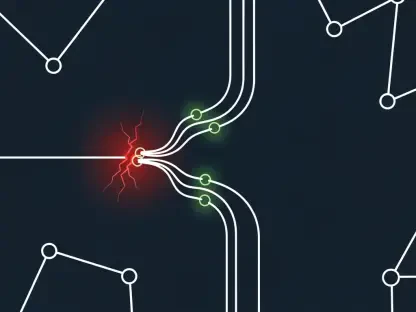Every online save, search, and AI query depends on servers and data storage. As technology advances, the growth of facilities that support this infrastructure will likely change entire industries. New developments in the digital economy are driving a significant increase in both demand for and investment in data centers.
The global data center market was valued at USD 242.72 billion in 2024 and is projected to reach USD 584.86 billion by 2032. In the midst of this growth, a rapid transformation is underway. Driven by the relentless demand for cloud services, AI workloads, and edge computing, the market is pivoting from centralized hyperscale facilities to a more distributed model. This shift offers lower latency, improved resilience, and greater flexibility by locating smaller data centers closer to users.
This promise comes with high operational costs. Running multiple data centers in different regions, often utilizing equipment from various vendors, introduces significant complexity. From network optimization and security policy management to maintenance, the traditional, manual approach to managing distributed infrastructure is slow, expensive, and dangerously prone to error.
As AI workloads become mission-critical, the human bottleneck in network operations is no longer sustainable. At the recent Ultra-Broadband Forum, Huawei showcased its answer to these challenges: Xinghe AI Fabric 2.0, a solution designed to bring autonomous intelligence to complex network environments.
The Breaking Point for Traditional Networks
For years, network operators have managed to cope with incremental growth. The shift to distributed architectures, however, represents a fundamental break from the past. The old playbook is failing. Operators today face a perfect storm of challenges that manual processes simply cannot handle.
Crippling Operational Drag: The time and resources required to deploy, configure, and maintain geographically dispersed networks are immense. A single service deployment can involve days of manual scripting and verification.
An Expanding Attack Surface: Each new data center and connection point introduces potential security vulnerabilities. Manually managing and updating security policies across this sprawling landscape is a check-the-box approach that leaves critical gaps.
The Inevitability of Downtime: In a distributed system, the potential points of failure multiply. A recent industry report found that the average cost of a critical data center outage now exceeds 1 million USD. Traditional fault detection can take hours, turning minor issues into major business disruptions.
From Manual Operations to Autonomous Intelligence
Huawei first launched its AI Fabric in 2018, anticipating the pressure AI would place on data center infrastructure by focusing on zero packet loss and high throughput. In 2025, however, simply improving the network is not enough.
Xinghe AI Fabric 2.0 uses AI-powered solutions to address the core operational pain points:
slow deployment,
manual intervention, and
network unreliability.
Its design philosophy is straightforward: use AI to support the networks that power AI.
Automating Security with the StarryWing Digital Map
One of the most complex tasks in a multi-data-center environment is provisioning network and security policies. The StarryWing Digital Map, coupled with AI, automates this entire process. By integrating security data, the platform dynamically generates a security access matrix and automatically recommends optimal policy solutions.
This approach transforms a workflow that previously took a skilled team two days of manual scripting into a process that delivers a 100% accurate recommendation in under two minutes. This reduction in deployment time not only accelerates service delivery but also eliminates the risk of human error in security configurations, strengthening the overall security posture.
Achieving Self-Healing with the NetMaster AI Agent
The platform’s AI agent, NetMaster, introduces a layer of autonomous operations and maintenance. The system combines unified detection, network automation, traffic visualization, and management functions through more than 45 APIs. The architecture enables natural language orchestration, allowing operators to resolve issues with simple commands.
The business impact is significant:
The platform can automatically resolve 80% of fault tickets, resulting in an average reduction in resolution time of over 90%.
Its speed is supported by the AI Eagle Eye Engine, which uses proprietary telemetry technology to detect and locate faults in seconds, not hours.
The network has been a key driver behind each wave of digital transformation. To effectively support AI, IoT, and cloud technologies at scale, a robust network foundation is essential. By freeing highly skilled engineers from reactive problem-solving, organizations can enable them to focus on strategic initiatives that drive business growth.
Consequently, IT leaders are aligning their investment strategies with this important understanding, according to the Cisco 2025 Networking Research:
94% of IT leaders believe that AI, IoT, and cloud computing will have a significant impact on their networks over the next two years, with 62% attributing this impact primarily to AI alone.
97% consider a modernized network critical for successfully implementing AI, IoT, and cloud solutions.
91% plan to increase the proportion of their IT budget allocated to networking.
Engineering End-to-End Resilience
Xinghe AI Fabric 2.0 dramatically reduces the impact of network outages through a three-layered defense system.
Intelligent Fault Switching: Its Data Plane Crossing Faults technology uses intelligent identification and automatic switching to reduce network fault recovery time from hours to minutes.
Instantaneous Path Recovery: The Dynamic Path Fast Recovery technology resolves local link failures in just one millisecond, ensuring service continuity for latency-sensitive applications.
Link-Level Protection: Finally, M-LAG technology focuses on the physical connection, using optical module channel protection to improve link reliability tenfold.
This defense-in-depth approach provides the resilience needed to support mission-critical AI workloads and maintain stringent service-level agreements. With nearly 80% of global companies now deploying AI, this level of reliability has become a competitive necessity.
Navigating the Shift to AI-Driven Operations
Transitioning to an AI-driven network fabric will not take a single leap but a progressive evolution. To navigate this shift effectively, operators should focus on building both technological and operational maturity.
1. Identify and Quantify Bottlenecks:
Map out the manual processes that slow you down, such as policy configuration, troubleshooting, and deployment. Establish the time and cost baseline to measure the impact of automation.
2. Pilot with Purpose:
Introduce AI-driven automation in a controlled domain, such as test or edge environments. Use these pilots to validate reliability, security, and performance improvements before scaling across regions.
3. Define Success Through Data:
Set measurable KPIs tied to tangible outcomes—halving fault resolution time, slashing deployment windows by 75%, or achieving zero unplanned downtime within the first operational cycle.
4. Build a Culture of Continuous Intelligence:
Empower teams to work with automation rather than around it. The most excellent ROI emerges when AI becomes part of the operational mindset, not just the toolset.
The Road Ahead
As data centers evolve into the backbone of the AI economy, autonomy is becoming a fundamental requirement rather than a choice. Huawei’s Xinghe AI Fabric 2.0 represents this new paradigm, where networks can think, heal, and optimize themselves. For operators, the message is clear: adopting AI at the fabric level is not only a path to greater efficiency but also a way to future-proof digital infrastructure for the demands of the intelligent era.









